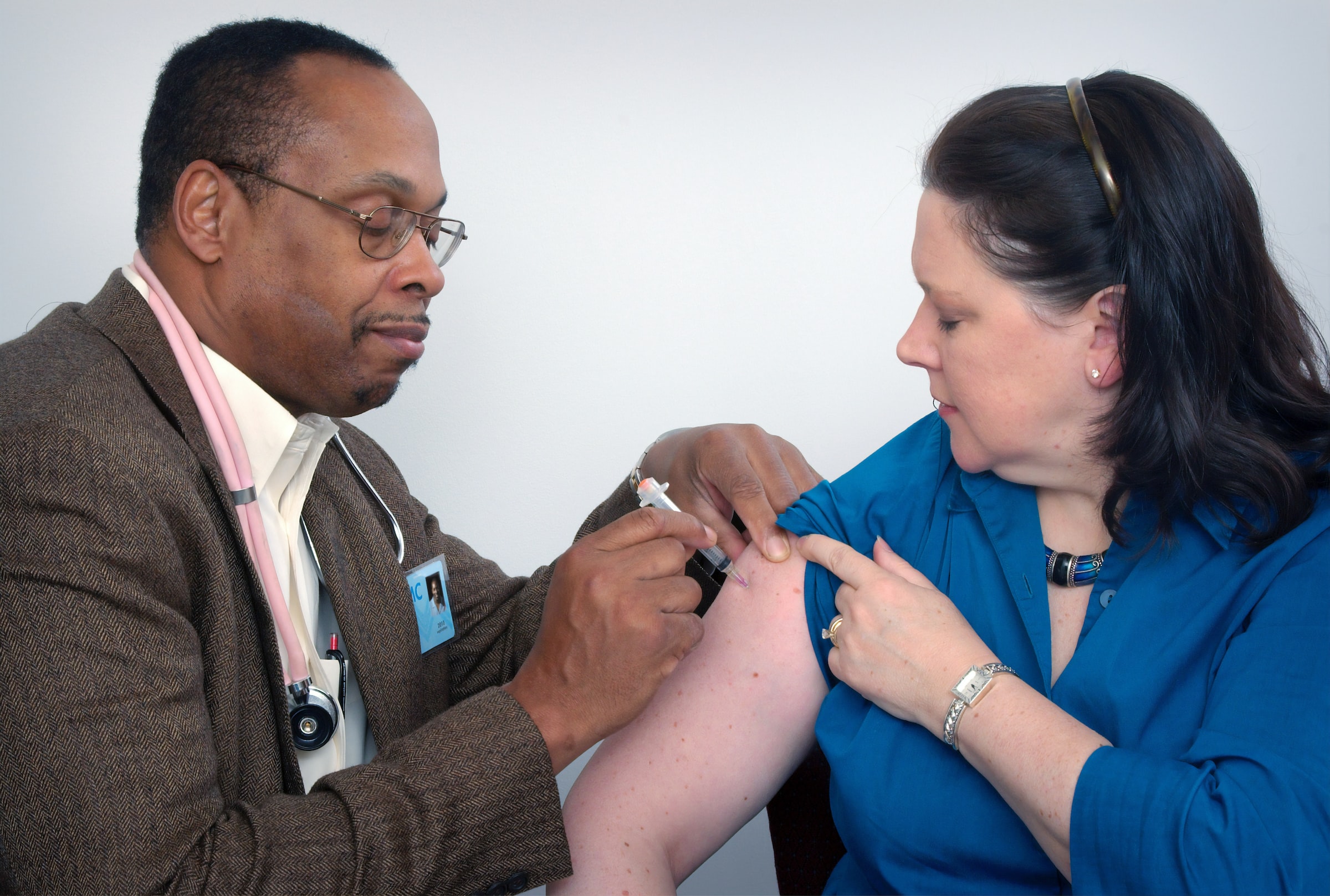COVID-19 has left its mark on the scientific community in two major ways: the introduction of messenger ribonucleic acid (mRNA) vaccines, and a persisting fear of the next pandemic. Both are proving useful in vaccine advancements, as a recent study out of the University of Pennsylvania showed optimistic progress towards a universal vaccine using mRNA technology.
Each year, the public is urged to roll up their sleeves to get their annual flu jab. But the flu vaccine isn’t always reliable, with annual effectiveness ranging anywhere from 10–60%. This is, in part, because targets of the vaccine are chosen well in advance of the flu season.
Scientists must predict which strains of influenza will be prominent in the upcoming flu season, and if wrong, the vaccine is rendered less effective.
Identifying a reliable and effective flu target is made difficult by the complicated lifecycle and constantly evolving influenza virus.
There are two main classes of influenza that contribute to the annual flu season: Influenza A and B. These viruses express proteins on their surface called hemagglutinin (H) and neuraminidase (N) and it is the complement of these proteins that define different influenza viruses (e.g., H1N1).
Annual flu vaccines generate immune responses directed at the head of a particular hemagglutinin protein. However, the hemagglutinin head is ever changing and experiences high rates of mutation.
As new mutations happen in the head of the protein, vaccines become less effective.
A universal flu vaccine, in theory, would replace the annual flu jabs and would provide broad and lasting protection against many strains of influenza virus. Given that pandemics are often born out of novel variants of the influenza virus, like the H1N1 (Swine Flu) pandemic of 2009, a universal vaccine would not only provide better annual protection against the flu but would also provide an immunological base for the next pandemic.
Universal vaccines have been tried in the past, with limited success.
However, the recent study published in Science shows that harnessing mRNA technology may be a breakthrough in developing elaborate vaccines with broad immunological coverage. In the study, the mRNA vaccine provided protection against all 20 known influenza strains in animal studies.
Although the vaccine in question was effective in generating an immune response to all known influenza strains, it demonstrated varying degrees of protection depending on how similar the infecting virus was to the vaccine component.
Mice that were infected with a virus with a hemagglutinin component that was matched (very similar) to that in the vaccine displayed few clinical symptoms and recovered within a few days of infection. This is compared to mice infected with a virus with a mismatched (slightly different) hemagglutinin component, which experienced more disease symptoms and took longer to recover.
Another important finding was seen in ferrets. Vaccinated and unvaccinated ferrets were infected with an influenza strain that had a hemagglutinin component distinct from those encoded in the vaccine. Half of the unvaccinated animals died during the experiment, while the vaccinated ferrets all survived and experienced fewer infectious symptoms.
These findings show that although a universal vaccine with broad protection may not be as effective as a vaccine matched to a virus of interest, it could still provide an important degree of immunity against a mismatched strain.
This represents the important role a universal vaccine could play in reducing severe illness and death by providing a base immunity against a novel emerging pandemic strain.
This is particularly important given global vaccine inequalities highlighted by the COVID-19 pandemic, with many people still not vaccinated against the disease to date. A universal vaccine could therefore allow the world to get ahead of vaccine production and distribution, ultimately reducing health inequalities in the event of the next pandemic.
While these results are promising, there is still a lot of work to be done before you can trade in your annual flu jab for a one-stop vaccine.
Animals provide a great model to test vaccines, but differences in host immune responses among species remain a drawback. In other words, these results will have to be demonstrated in humans before they can be implemented clinically.
A universal vaccine would be a game-changer in pandemic preparedness. Only further research will be able to tell if one jab could help all in the future.





